Beyond the Bab-e-Khyber
Armies marching to and from Afghanistan have all trod the time-worn passages of the Khyber pass.
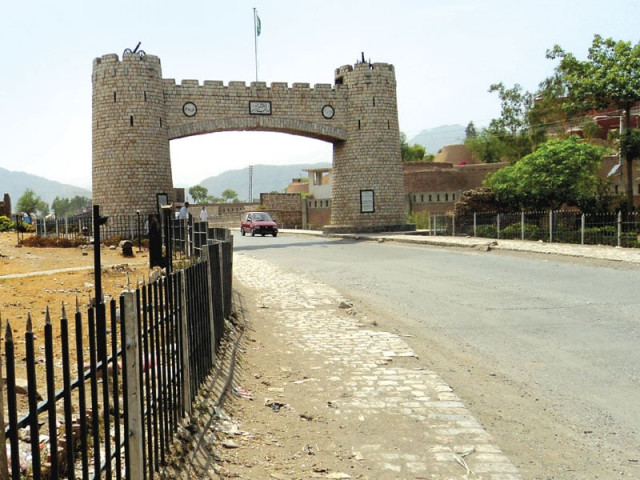
Beyond the Bab-e-Khyber
A journalist friend, Amirzada — himself an Afridi tribesman from Khyber agency’s Jamrud subdivision — gets down and walks briskly towards a heavily-fortified checkpoint of the Khyber Khasadar Force to seek official permission for the risky 30-kilometre drive through the Khyber Pass. Tall, sturdy recruits of the tribal police unit dressed in dark-grey uniforms with Kalashnikov assault rifles slung on their shoulders, give our car the once over before letting us pass.
With the Bab-e-Khyber looming in the background I disembark quickly, eager to try my hand at photography. Since my childhood I have been seeing this monument, touted as a symbol of the North-West Frontier Province (now Khyber-Pakhtunkhwa), on television but this is the first time I’ve ever actually laid eyes upon it.
The Bab-e-Khyber, or the Khyber Gate, was built in 1964 at the mouth of the fabled Khyber Pass, where the Jamrud Fort is also located. The pass itself is a witness to history, and has seen countless invaders and great warriors enter the rich lands of subcontinent to seek their fortunes and build empires. A notable few, like Chandragupta Maurya have also gone the other way, into Afghanistan.
The Pass itself is 16 kilometres north of Peshawar, towards the border between Pakistan and Afghanistan. Starting from the foothills of the Suleiman Range at Jamrud, it gradually rises to an elevation of 1,066 metres above sea level.
Driving through the Khyber Pass is a test of one’s motoring skills. Your car literally needs to have lizard’s feet to climb the steep, blackened mountains.
Since Pakistani law does not apply in the tribal regions, roadside signboards appear every few kilometres, warning motorists against straying off the main road called the Pak-Afghan Highway. The message is clear: stray off the straight and narrow at your own risk.
As soon as we enter Jamrud, Amirzada points to a double-storeyed mansion by the roadside. “This is the house of local politician Haji Iqtidar Shah,” he says while gesturing towards the structure. An Afridi tribesman like Amirzada himself, Shah had defied the Lashkar-i-Islam, a powerful extremist group based in the neighbouring Bara subdivision, thus inviting their wrath.
“In 2008, Lashkar fighters attacked the house with heavy weapons,” recalls Amirzada. “I was covering the incident from the rooftop of my office building in the Karkhano Market. The fighting continued the whole night, and at dawn, paramilitary troops finally came to the rescue of Shah and his embattled men.”
Ever since, the Lashkar has mounted sporadic attacks on Shah and his men to avenge their humiliation. Yet Shah still remains defiant.
We quickly drive past Shah’s abode and our car sputters along on the narrow, craggy road as rugged scenery glides past the window. Occasionally the car is forced to pull up at the side of the road to allow another vehicle coming from the opposite direction to pass, as the road is too narrow to allow two cars to pass simultaneously. I spot paramilitary checkpoints perched atop every mountain, menacingly overlooking the highway. The blistering June sun reddens the dark-grey rocks and, every now and then, peeps through the crevices.
Suddenly, I feel a visible change in the weather and scenery. On the right side of the highway, a stream swishes past, squeezing its way through the mountains. A group of young picnickers is swimming in the water which appears is cool and refreshing. I look at Amirzada quizzically. “We’ve entered Landikotal, the third subdivision of the Khyber agency,” he explains. “While the rest of Khyber agency sizzles in summer, the weather in Landikotal remains pleasant.” Clearly, the picknickers would agree if we were to stop and ask them.
After driving a few kilometres, Amirzada points to a sprawling fort-like mansion. “This is the palace of international drug baron Haji Ayub Afridi,” he tells me in hushed tones. To me, the 100-room palace looks like it would be better placed in ‘A Thousand and One Nights’. Only this isn’t the Baghdad of Harun-Al Rashid but Landikotal.
Afridi was a key player in the Soviet war in Afghanistan. In collaboration with the CIA, he funnelled hundreds of thousands of dollars and countless weapons to the Afghan mujahideen fighting the Red Army.
But trafficking heroin was his real job, and Afridi used his new-found influence to move Afghan opium to secret laboratories in the tribal regions. Nor was he content to remain underground. In 1990, he was elected as a member of the National Assembly, but was subsequently arrested several times and even served a jail term in the United States.
In March 2006, the Anti-Narcotics Force (ANF) seized Afridi’s palace, along with his other properties, following an injunction from the Supreme Court. A signboard at the main entrance to the palace reads: “Visitors not allowed.” The cabbie slows down to allow me to take snapshots of the mansion which, Amirzada says, used to attract visitors in droves when it was open to the public. “You know, the palace has a mini-zoo and the cutlery in its kitchen is made of gold,” he tells me. It seems crime does in fact pay, if only for a while.
As we move past the grandiose manor, Amirzada draws my attention to a small roadside mosque shaded by huge trees. “This is Ali Masjid,” says Amirzada “Legends have it that Hazrat Ali (RA), the fourth caliph and cousin of Prophet Muhammad (pbuh) had built this mosque when he visited this place”. He also shows me a huge boulder precariously suspended on a cliff, which carries the marks of a hand believed to be that of Hazrat Ali (RA) himself. The area, which is the narrowest point of the Khyber Pass, has been named after the mosque as Ali Masjid.
Overlooking the mosque is Ali Masjid Fort, which offers a panoramic view of this strategic sector of the pass. A small cemetery is also situated nearby where British soldiers, who fell in the battle of Ali Masjid during the Second Anglo-Afghan war, are buried. A true graveyard of Empires, I think to myself as we drive on.
Between Ali Masjid and Landikotal, there is a roadside mound with a Buddhist stupa on top. Called the Sphola stupa, the structure dates back to the 2nd to the 5th century AD, during the reign of the Kushan dynasty. A newly constructed paramilitary checkpoint blocks the façade of the stupa, which consists of a dome resting on a three-tiered square base. The mound on which the stupa stands, is riddled with small caves — an indication that it has been dug into repeatedly. “Some 20 to 25 years ago, local tribesmen dug these caves in the hope of finding riches they believed were buried underneath,” Amirzada explains. “And they found a treasure trove of Buddha figurines, clay-made utensils and gold and copper coins.”
The political authorities intervened to get the excavation stopped, but a decade later, another man decided to try his luck. “A local driver sold his truck, bought equipment and started digging the mound,” Amirzada says as he ties in vain to recall the man’s name. “He spent all the money on excavation and became bankrupt — but found nothing,” the journalist adds with a snigger. “Ever since then, nobody has dared to try his luck.”
At several places, I spotted railway tracks, bridges and tunnels— some crumbled, others crumbling. This is what is left of the colonial-era Khyber Steam Safari — the dream train journey from Jamrud to Landikotal. Pulled by two vintage steam locomotives built in the 1920s, the train took passengers through the breathtaking mountainous terrain. The 42-kilometre route consisted of 34 tunnels and 92 bridges and culverts.
The train stopped chugging in 2005 and the route that was once described as ‘a journey into time and history’ is now, for lack of a better term, history. “The railway authorities cite different reasons for the suspension of the service,” quips Amirzada. “If one is to believe them, the service was suspended after the apocalyptic earthquake of 2005 destroyed most of the track.”
At a sharp bend of the road, a military convoy appears out of nowhere and troops brandishing LMGs scream at us to halt. Amirzada almost robotically elbows the driver to stop. “They’ve every reason to be cautious. They’ve been attacked by militants several times in the region,” he says. Our car pulls up and so do a large number of trucks, lorries and cars behind us. We move forward after the convoy disappears at another bend of the road.
Soon I spot an imposing red-brick building, partly camouflaged by trees and vegetation. Before I ask about it, Amirzada quickly says, “This is Shagai Fort. It was built in the 1920s by the British but now it’s manned by our military and paramilitary troops.”
The fort also served as headquarters for the Khyber Rifles — the traditional guardians of the Khyber Pass. “Usually, trilateral flag meetings among Pakistan, Nato and Afghan military officials are held in this fort,” Amirzada adds.
While driving past the Ali Masjid village, Amirzada points to warehouses on the periphery and says, “Smuggled goods are stored here before they are taken to the Karkhano Market in Peshawar.”
Under an agreement, Pakistan allows transit to goods shipped from the Karachi seaport to Afghanistan. But most consignments never reach their destination. They are smuggled back to Pakistan by Khyber Agency-based Pakistani and Afghan smugglers, causing billions of rupees of losses in evaded import duties.
“The smugglers hire local tribesmen and young Afghan children to piggyback the goods to the Karkhano Market,” Amirzada explains. “The children get Rs200 to Rs400 for each shipment.”
In the beginning of the Landikotal bazaar, my companion shows me a small roadside mosque. “Tamachay Mullah, the head of the Abdullah Azaam Brigade — which is responsible for attacking Nato supplies en route to Afghanistan — was once a prayer leader here,” he says. Tamachay Mullah is a commander of the outlawed Tehreek-i-Taliban Pakistan for Khyber agency. He also shows me an abandoned roadside terminal. “Here Nato supply vehicles used to park — but some time back Tamachay Mullah’s men came here in the dead of the night and slew the three guards. It has been abandoned ever since.”
The Landikotal Bazaar is the last major town before the Pak-Afghan border at Torkham. Though a fairly big bazaar, there’s no clamour or cacophony here. The serenity is only occasionally broken by honking vehicles lumbering towards Torkham.
A group of local journalists, with whom Amirzada had coordinated before we left Peshawar, were waiting for us at the Landikotal press club. It’s a modest two-room facility on the first floor of a dingy building where local journalists socialise. The land may be inhospitable, but the people are anything but. They treated me a sumptuous lunch — consisting of Landikotal’s famous chicken karahi and naan — followed by dessert and tea.
We sat down to discuss the situation in the tribal areas in general, and the Khyber agency in particular. Soon more journalists joined in, but despite their enthusiasm, they were reluctant to speak freely on militancy. Their reluctance was understandable — given the threats they’re facing from militants and the number of their colleagues who have been killed.
At dusk we set about our journey back to Peshawar. The 30-kilometre drive in the Khyber Pass, a silent witness to countless events in the history of this region, is an unforgettable experience. Driving in the lap of lofty, rugged mountains, I felt dwarfed not only by the towering mountains, but also by the memory of those near-legendary figures who trod these paths in centuries past. For a day, I was lucky enough to walk in their footsteps.
Published in The Express Tribune, Sunday Magazine, January 22nd, 2012.



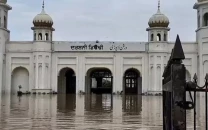
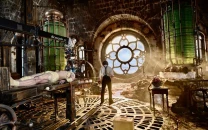

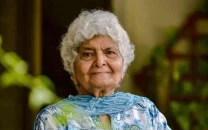
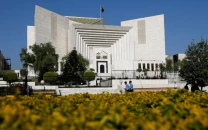
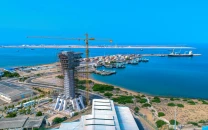
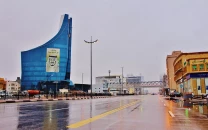
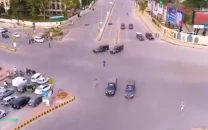
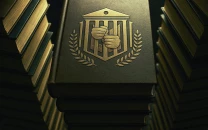
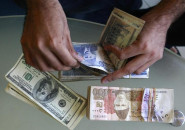






COMMENTS
Comments are moderated and generally will be posted if they are on-topic and not abusive.
For more information, please see our Comments FAQ